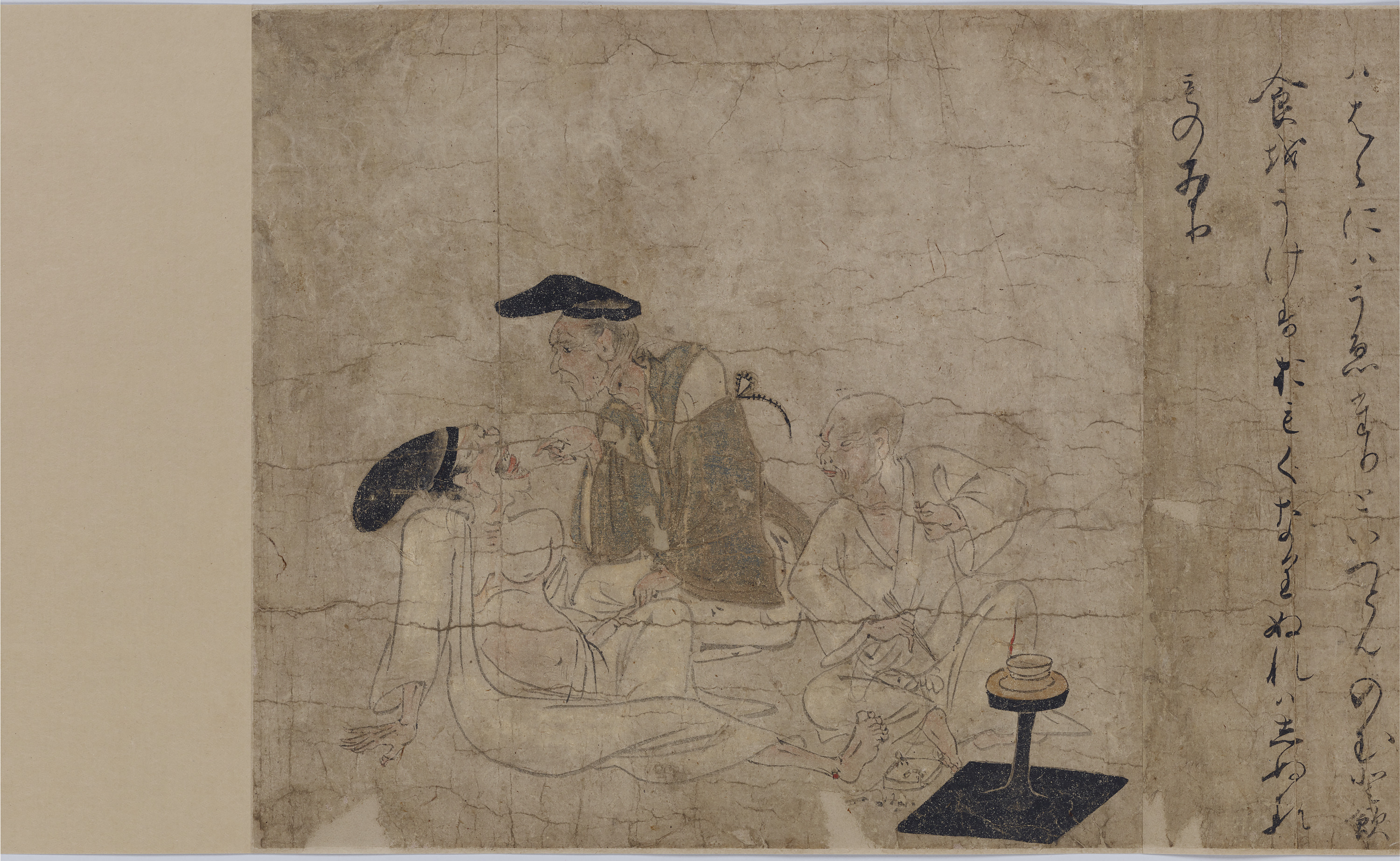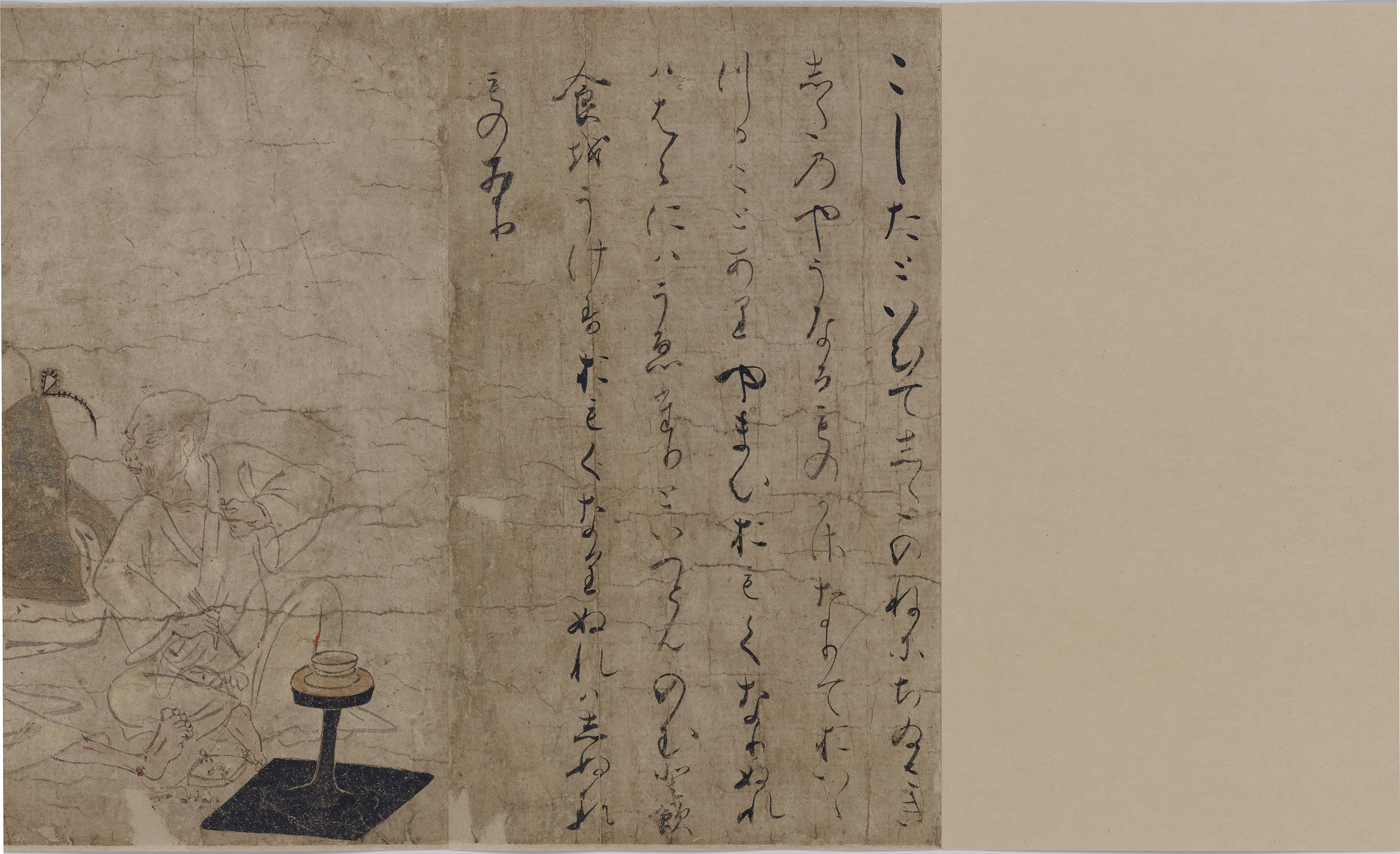- TOP
- Yamai no Soshi (Diseases and Deformities): Man with Uvula Disease
Overview
National Treasure
Yamai no Soshi (Diseases and Deformities): Man with Uvula Disease
- Museum No.
- AK679-2
Showing 1-6 of 3
| Title | Yamai no Soshi (Diseases and Deformities): Man with Uvula Disease |
|---|---|
| Designation | National Treasure |
| Artist | |
| Category | Painting(A), Handscrolls |
| Country | Japan |
| Period | Heian Late |
| Century | 12th |
| Year | |
| Quantity | |
| Materials | |
| Dimensions | Height 25.9cm Width 42.4cm |
| Inscription by | |
| Signature/Seals Etc | |
| Donor |
Included Works
 Yamai no Soshi (Diseases and Deformities)
Yamai no Soshi (Diseases and Deformities)
AK679 Yamai no Soshi (Diseases and Deformities): Man with a Cold
Yamai no Soshi (Diseases and Deformities): Man with a Cold
AK679-1 Yamai no Soshi (Diseases and Deformities): Man with Lice
Yamai no Soshi (Diseases and Deformities): Man with Lice
AK679-3 Yamai no Soshi (Diseases and Deformities): Woman with Halitosis
Yamai no Soshi (Diseases and Deformities): Woman with Halitosis
AK679-4 Yamai no Soshi (Diseases and Deformities): Man with Anal Fistula
Yamai no Soshi (Diseases and Deformities): Man with Anal Fistula
AK679-5 Yamai no Soshi (Diseases and Deformities): Hermaphrodite
Yamai no Soshi (Diseases and Deformities): Hermaphrodite
AK679-6 Yamai no Soshi (Diseases and Deformities): Man with Loose Teeth
Yamai no Soshi (Diseases and Deformities): Man with Loose Teeth
AK679-7 Yamai no Soshi (Diseases and Deformities): Eye Disease
Yamai no Soshi (Diseases and Deformities): Eye Disease
AK679-8 Yamai no Soshi (Diseases and Deformities)
Yamai no Soshi (Diseases and Deformities)
AK679-9
This object may be one within a set or the title of a set. To see all objects in the set, perform a Category Search by the Museum Number below, entering numerals only before the hyphen.











This illustrated handscroll is a collection of various unusual diseases and deformities. The work was copied in the Kansei Era (1789-1801) of the Edo Period by the Nagoya poet Odate Takakado.
This copy was a single handscroll composed of fifteen scenes, nine of which are currently owned by the Japanese national government. The other sections were separated at an earlier date and remain in private collections. Four other scenes that were not included in the Kansei Era copy have surfaced in recent years . From the painting styles and subjects, these four are considered to have been sections of the original handscroll, which were separated from the others before the Edo copy was made.
The scenes feature relaxed, carefree brushstrokes supplemented with light colors. People with various illnesses form the central subjects, but the settings in which they are depicted give the work the appeal of a genre-painting. The depiction of human figures is similar to that of the Kyoto National Museum's Gaki Zoshi (Stories of Hungry Ghosts) and the various versions of Shamon Jigoku Zoshi (Stories of Hell for Buddhist Priests). For these reasons, some consider this work to fall under the category of rokudo-e (painting of the Six Realms), expressing the miseries of the human realm of existence. Unlike the Jigoku Zoshi (Handscrolls of Buddhist Hell), however, Yamai Zoshi (Diseases and Deformities) does not emphasize the concept of leaving the world behind. Instead, this scroll seems to derive its appeal more from narrative depictions.
The scene entitled "Heatstroke" depicts a woman beset with repeated diarrhea and vomiting. This suffering figure is humorously contrasted by the woman sitting indoors, casually grinding with a mortar and pestle. This scene also provides an valuable insight into daily village life. "Hermaphrodite" depicts a person with both male and female attributes in the same body. The scene is set in the home of a fortune teller, showing us what a home of the day looked like. "Man with Loose Teeth" depicts a man with pyorrhea stopping mid-meal because his teeth are bothering him. "Eye Disease" shows a man who has temporarily lost his vision. He is receiving "acupuncture treatment" from a man calling himself a doctor and ends up loosing his vision all together.
Japan-Heian-Late